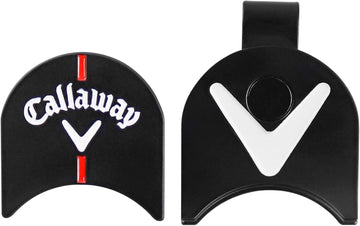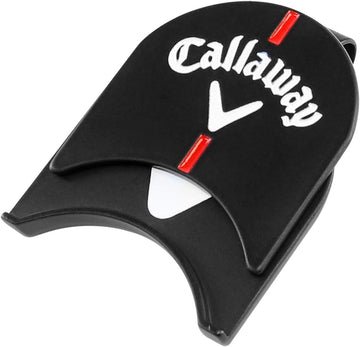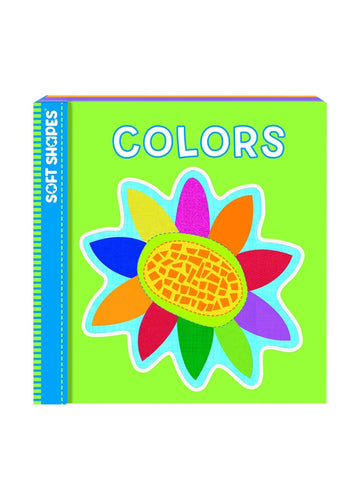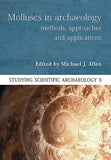Molluscs In Archaeology: Methods, Approaches And Applications (Studying Scientific Archaeology) Paperback
$5.00
$53.00
Store Name: Online Store
Product Condition: Good As New
Condition: Nil
Expiry date: Nil
Warranty date: Nil
Book Type: Non Fiction/History
The subject of ‘Molluscs in Archaeology’ has not been dealt with collectively for several decades as most previous volumes in this subject area have been confined to studies of either land or marine molluscs, or mollusc shells as artifacts. The 23 specially commissioned papers presented here addresses many aspects of molluscs in archaeology. Marine molluscs are a common find on archaeological sites, where they may represent food waste or their shells having been utilized as tools, artifacts and ornaments. Land snails are also found as food waste in middens, but more commonly their microscopic remains are used to examine site environmental and land use histories. This comprehensive collection by most of the leading researchers in the field will give the reader an overview of the whole topic: methods of analysis and approaches to interpretation. It aims to be a broad-based textbook giving readers an insight into how to apply analysis to different present and past landscapes, and how to interpret those landscapes. Contributors present marine, freshwater and land snail studies, and examine topics such as diet, economy, climate, environment and land-use, isotopes and molluscs as artifacts, providing archaeologists and students with the first port of call regarding a) methods and principles, and b) the potential information molluscs can provide.
Combining authoritative overviews with a range of case studies, Molluscs in Archaeology concentrates on analysis and interpretation that most archaeologists and students can undertake and understand, and reviews the ‘heavier’ science in terms of potential, application and interpretational value
“Particular strengths of this volume are that it integrates studies of terrestrial and marine molluscs, each often pursued separately, and covers a wide range of themes ranging from palaeoenvironmental and palaeoeconomic topics to the use of molluscs as sources of information about technology, symbolism, dating and diet.”
Professor Geoff Bailey, York University
Table of Contents
Preface
List of contributors
Acknowledgements
Molluscs in Archaeology; an introduction: Michael J. Allen and Bas Payne
Part 1: Palaeo-environments; environment and land-use
TERRESTRIAL HABITATS, CONTEXTS AND LANDSCAPES
1. Land snails in archaeology: Michael J. Allen
2. The geoarchaeology of context; sampling for land snails (on archaeological sites and colluvium): Michael J. Allen
3. Numerical approaches to land snail palaeoecology: Matt Law
4. Molluscs and the palaeo-environment of coastal blown sand and dunes:Thomas Walker
5. Molluscs from machair-dune systems: archaeological site formation processes and environmental change: Matt Law and Nigel Thew
6. Caves and molluscs: Chris O. Hunt and Evan A. Hill
WETLANDS AND FRESH- AND BRACKISH-WATER
7. Molluscs from the floodplain alluvial sediments in the Thames Valley: Mark Robinson
8. Wetlands; freshwater and slum communities: Terry O’Conno
Part 2: Palaeo-environmental reconstruction: Europe, the Mediterranean and Near East
9. The southern English chalklands: molluscan evidence for the nature of the post-glacial woodland cover : Michael J. Allen
10. (Some thoughts on) using molluscs for landscape reconstruction and ecology in Malta:Michael J. Allen and Bri Eastabook
11. Molluscan remains from Early to Middle Holocene sites in the Iron Gates reach of the Danube, Southeast Europe: Catriona Pickard, Adina Boroneanț and Clive Bonsall
12. Land Mollusc middens: Victoria K. Taylor and Martin Bell
Part 3: Marine and Food and Diet
13. Marine molluscs from archaeological contexts; how they can inform interpretations of former economies and environments: Liz Somerville, Janice Light and Michael J. Allen
14. Oysters in archaeology: Jessica Winder
15. Shell middens: Karen Hardy
16. The collection, processing and curation of archaeological marine shells: Greg Campbell
Part 4: Artefacts
17. Shell ornaments, icons and other artefacts from the eastern Mediterranean and Levant: Janet Ridout-Sharpe
18. Molluscan shells as raw materials for artefact production: Katherine Szabó
19. How strong is the evidence for purple dye extraction from the muricid gastropod Nucella lapillus (L. 1758), from archaeological sites in Britain and Ireland?: Janice Light and Thomas Walker
20. Marine shells as artefacts?; a cautionary tale of natural wear and tear as compared to resourceful anthropogenic modification processes: Janice Light
Part 5: Science and Shells
21. Bivalves and Radiocarbon: Ricardo Fernandes and Alexander Dreves
22. Radiocarbon dating of marine and terrestrial shell: Katerina Douka
23. Stable Isotope ecology of terrestrial gastropod shells: André Carlo Colonese
Index
Combining authoritative overviews with a range of case studies, Molluscs in Archaeology concentrates on analysis and interpretation that most archaeologists and students can undertake and understand, and reviews the ‘heavier’ science in terms of potential, application and interpretational value
“Particular strengths of this volume are that it integrates studies of terrestrial and marine molluscs, each often pursued separately, and covers a wide range of themes ranging from palaeoenvironmental and palaeoeconomic topics to the use of molluscs as sources of information about technology, symbolism, dating and diet.”
Professor Geoff Bailey, York University
Table of Contents
Preface
List of contributors
Acknowledgements
Molluscs in Archaeology; an introduction: Michael J. Allen and Bas Payne
Part 1: Palaeo-environments; environment and land-use
TERRESTRIAL HABITATS, CONTEXTS AND LANDSCAPES
1. Land snails in archaeology: Michael J. Allen
2. The geoarchaeology of context; sampling for land snails (on archaeological sites and colluvium): Michael J. Allen
3. Numerical approaches to land snail palaeoecology: Matt Law
4. Molluscs and the palaeo-environment of coastal blown sand and dunes:Thomas Walker
5. Molluscs from machair-dune systems: archaeological site formation processes and environmental change: Matt Law and Nigel Thew
6. Caves and molluscs: Chris O. Hunt and Evan A. Hill
WETLANDS AND FRESH- AND BRACKISH-WATER
7. Molluscs from the floodplain alluvial sediments in the Thames Valley: Mark Robinson
8. Wetlands; freshwater and slum communities: Terry O’Conno
Part 2: Palaeo-environmental reconstruction: Europe, the Mediterranean and Near East
9. The southern English chalklands: molluscan evidence for the nature of the post-glacial woodland cover : Michael J. Allen
10. (Some thoughts on) using molluscs for landscape reconstruction and ecology in Malta:Michael J. Allen and Bri Eastabook
11. Molluscan remains from Early to Middle Holocene sites in the Iron Gates reach of the Danube, Southeast Europe: Catriona Pickard, Adina Boroneanț and Clive Bonsall
12. Land Mollusc middens: Victoria K. Taylor and Martin Bell
Part 3: Marine and Food and Diet
13. Marine molluscs from archaeological contexts; how they can inform interpretations of former economies and environments: Liz Somerville, Janice Light and Michael J. Allen
14. Oysters in archaeology: Jessica Winder
15. Shell middens: Karen Hardy
16. The collection, processing and curation of archaeological marine shells: Greg Campbell
Part 4: Artefacts
17. Shell ornaments, icons and other artefacts from the eastern Mediterranean and Levant: Janet Ridout-Sharpe
18. Molluscan shells as raw materials for artefact production: Katherine Szabó
19. How strong is the evidence for purple dye extraction from the muricid gastropod Nucella lapillus (L. 1758), from archaeological sites in Britain and Ireland?: Janice Light and Thomas Walker
20. Marine shells as artefacts?; a cautionary tale of natural wear and tear as compared to resourceful anthropogenic modification processes: Janice Light
Part 5: Science and Shells
21. Bivalves and Radiocarbon: Ricardo Fernandes and Alexander Dreves
22. Radiocarbon dating of marine and terrestrial shell: Katerina Douka
23. Stable Isotope ecology of terrestrial gastropod shells: André Carlo Colonese
Index






























